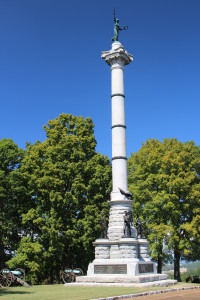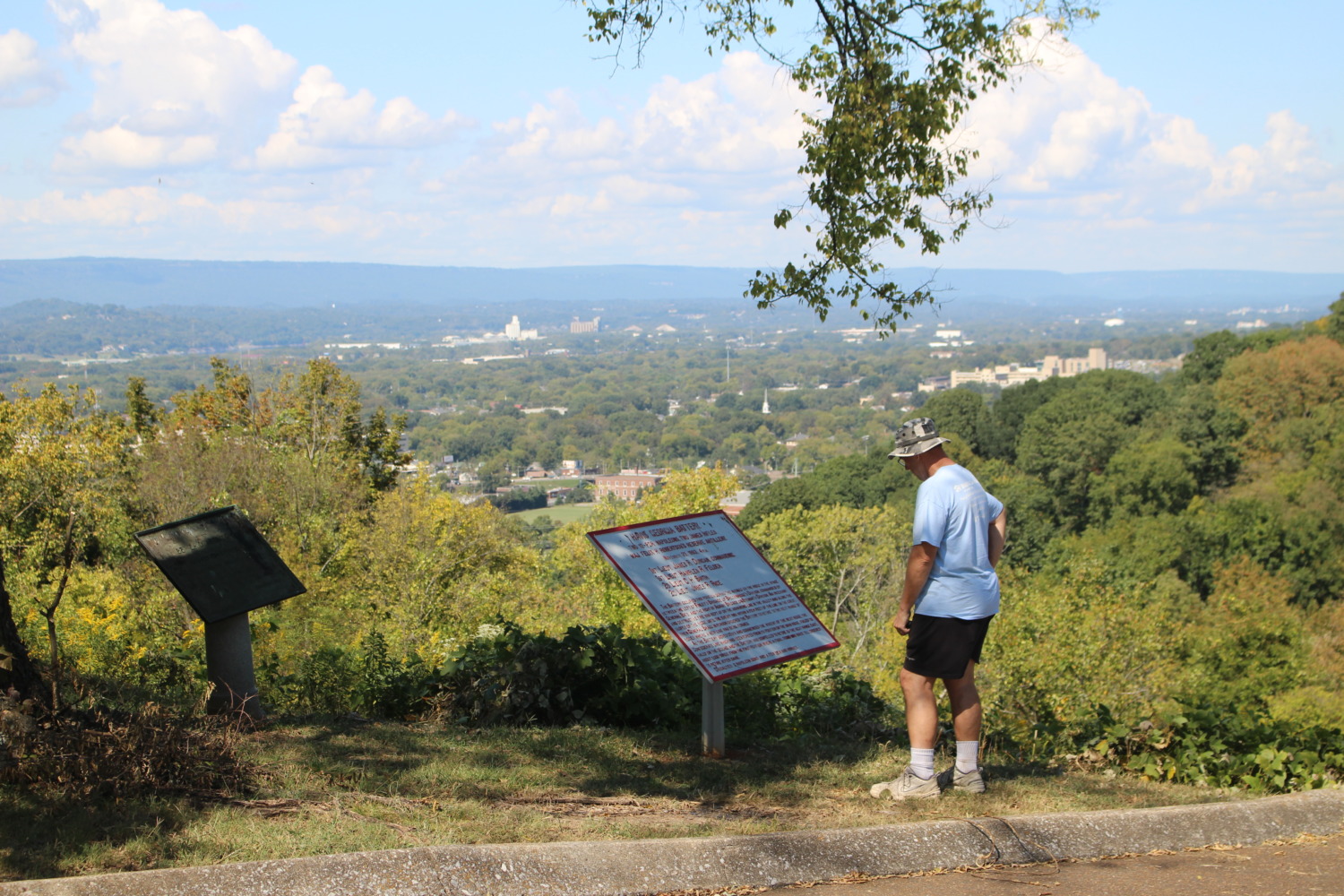
After two days of relatively light fighting, the Union army had pushed to the top of Orchard Knob and Lookout Mountain. General Hooker with his army was on the east side of Lookout Mountain. General Sherman had crossed the Tennessee River and had his army stationed north of Missionary Ridge. General Thomas and his army were poised in Chattanooga. General Grant was ready for a final battle to push his army out of Chattanooga and break the siege.
The Confederate army was gathered in force on Missionary Ridge. In order to break through to Georgia, the entire Union Army would have to fight to take the ridge. Over the previous two days, General Bragg consolidated his army, called up reinforcements, and finally set up entrenchments. The cannons were ready, set at various angles on the 700 high foot ridge that ran beside Chattanooga.
Grant intended that his friend, General William Tecumseh Sherman, would be the star of this battle. General Sherman was to lead the attack against the Confederate army starting on the north end of Missionary Ridge and driving the Confederates back into Georgia. On the morning of November 25, General Grant ordered Sherman to attack. Then Grant stood on Orchard Knob to watch what he expected to be a quick and decisive victory.
The initial attack went well. Sherman and the Army of the Tennessee attacked and easily captured the hill. There was, however, a problem. Sherman had attacked the wrong hill. His army had attacked a secondary hill, not the north end of Missionary Ridge. The first attack gave Bragg time to reinforce his troops on the north end of Missionary Ridge. When Sherman’s army attacked the correct hill, the Confederate defensive positions were strong and the Union army was repulsed. Over and over Sherman threw his troops at the ridge, but the Confederates, led by General Cleburne, were not moving.

As Grant watched the battle bog down, he decided to order Hooker to attack the south end of the ridge and Thomas to attack the middle of the ridge. Grant hoped that this would take pressure off Sherman and allow his mission to be successful. Hooker began moving his army from the east side of Lookout Mountain across the valley toward the gentle southeastern slopes of Missionary Ridge. General Thomas and his Chickamauga veterans were only to take the rifle pits at the bottom of the steep slopes in the middle of the ridge.
After crossing a mile of open field, under heavy fire the whole way, Thomas’s Army of the Cumberland easily took the rifle pits at the base of Missionary Ridge. Although the army had sustained casualties crossing the field, they were now under withering fire in the pits at the base of the ridge. Cannons and guns were able to pick them off in the pits from several directions up on the ridge.
The men at the base of the ridge considered their options. They could stay in the rifle pits, according to the order of General Grant, and be killed by the fire from above. They could return across the open field, being killed while retreating which would accomplish nothing. Or – they could go up the ridge.

Without an order being given, as one body, 15,000 men began climbing the 500 feet up the ridge. The trees and boulders were their only protection from the enfilading fire of the Confederates, but turning around would be just as deadly. They gasped for breath, pausing frequently before they were able to climb again. The rough terrain mixed up regiments and units as each man tried to find the fastest way to the top.
At first the Confederates were delighted by the easy targets. But the relentless Union army reached the top, just a few at first, then more and more. Despite their entrenchments, too many Confederate soldiers had been moved to reinforce the northern end of the ridge and the few troops left in the middle were soon running away from the men cresting the ridge. As the Confederates withdrew in disorder, Thomas’s army overran their position.
By 6 p.m. the Confederate center was broken and the Union army advanced north, rolling up the Confederate right. Sherman was then finally able to make progress, as Cleburne lead an orderly retreat off of tunnel hill. This organized retreat allowed the Confederate army to get off Missionary Ridge and eventually regroup in Dalton, Georgia.
Casualties for the Union army during the Battles for Chattanooga were heavy: 753 killed, 4,722 wounded. Most of the casualties for the Confederates were soldiers who went missing, as if some of them started running and just kept going back to their homes. 361 Confederate soldiers were killed and 2,160 were wounded but 4,416 were missing.
Whenever we see Missionary Ridge, I am amazed at what the Union soldiers did that day. They were desperate to stop the enemy fire and climbed straight up the ridges and cliffs, fighting an entrenched enemy as soon as they gained the summit. I find it incredible that men would fight, and emerge victorious, under those circumstances.
So what happened next? That will have to wait for next week and my final installment of Civil War History in a Nutshell.

